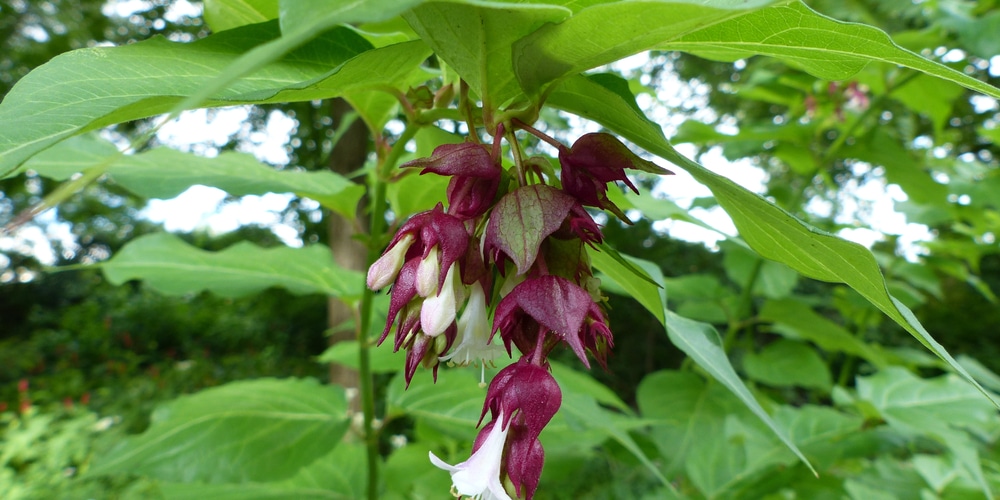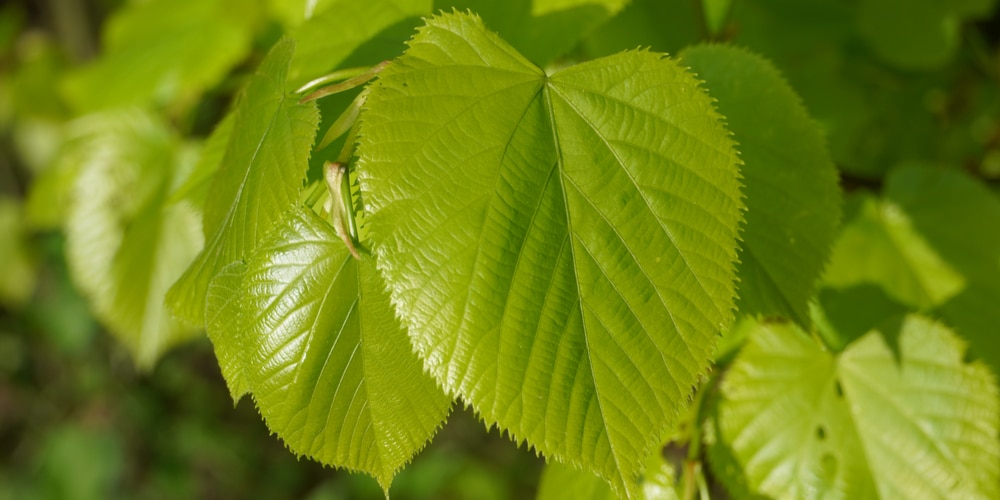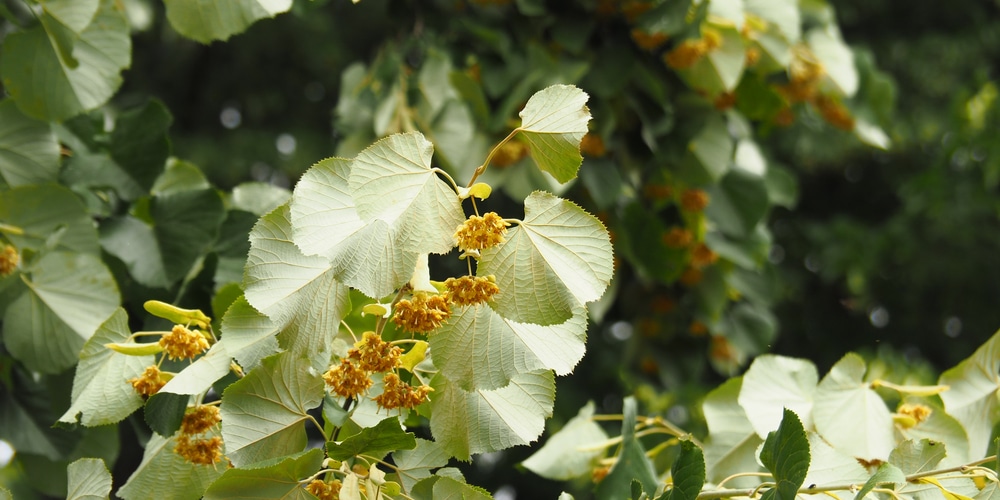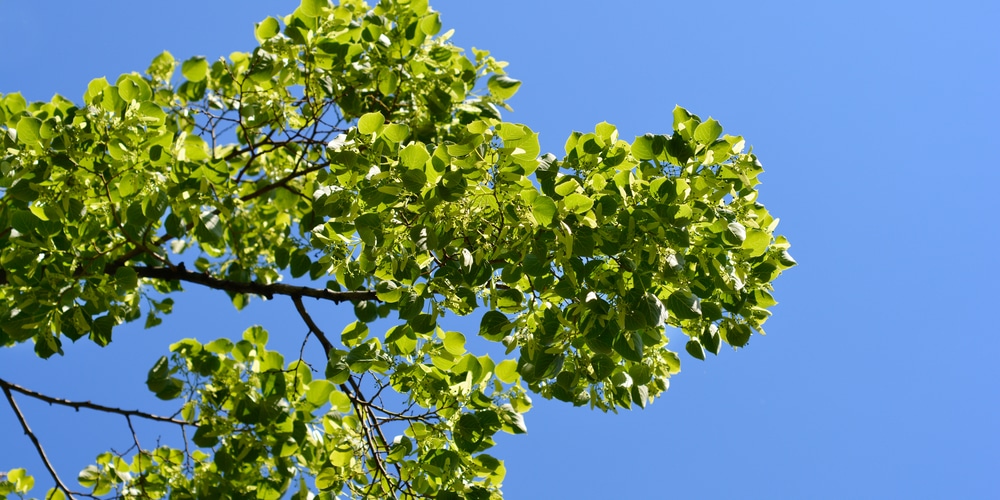The leaves of a tree are more than shade providers or dangling appendages; they are the organs of photosynthesis. They perform photosynthesis to provide food for the tree and oxygen for people and wildlife. Leaves are also a key identification between species of trees, with the shape being one of the most significant factors. Let’s look at trees with heart shaped leaves!
Trees with heart shaped leaves
Here are deciduous trees with heart-shaped leaves:
Foxglove Tree (Paulownia tomentosa)

The Foxglove Tree is native to Japan, China, and Korea. It is a beautiful tree that can reach heights of 30-50 feet, and it has heart-shaped leaves that are about 10 inches long.
The flowers are white with purple spots inside. The leaves change colors in the fall to shades of orange, yellow and red. They grow in full sun to partial shade but will tolerate more shade than most other trees.
American Lime (Tilia Americana)
It is also known as the Common Lime or Basswood. It is a deciduous tree that grows up to 90 feet tall and has heart-shaped leaves up to 10 inches long. It blooms in April and May with white flowers that smell like honey.
The flowers are followed by round fruits that are dark blue, purple, or black when ripe. The fruit is quite large and can be used to make jams, jellies, pies, and other desserts.
In the fall, its leaves turn yellow, orange, or red, depending on the variety of lime trees you have. It grows in full sun to partial shade but prefers full sun and moist soil.
Silver Lime (Tilia tomentosa)
Tilia tomentosa, also known as silver linden in the US and silver lime in the UK, is a species of flowering plant in the family Malvaceae, native to southeastern Europe, Turkey, and Iran.
It is a medium to a large deciduous tree growing to 15–25 m tall with a trunk up to 1 m diameter, with smooth grey bark. The leaves are 7–12 cm long and 4–6 cm broad, with a serrated margin; they are green above and silvery-white below and turn yellow in autumn.
The flowers are produced in clusters of three to five together in spring at the same time as the new leaves appear; they are pendulous with a deep red-pink cup 5 cm diameter, each flower 8–10 mm across with five petals.
The fruit is an oval samara consisting of two winged carpels on a short style.
Caucasian Lime (Tilia x euchlora)
The Caucasian lime is a tree native to the Caucasus region, where it grows in mixed forests at elevations of 200–1,600 m.
It is a large deciduous tree growing to 25–35 m tall, with smooth grey bark. The leaves are 7–12 cm long and 4–6 cm broad, with a serrated margin; they are green above and silvery-white below and turn yellow in autumn.
The flowers are produced in clusters of three to five together in spring at the same time as the new leaves appear; they are pendulous with a deep red-pink cup 5 cm diameter, each flower 8–10 mm across with five petals.
The fruit is an oval samara consisting of two winged carpels on a short style.
Southern Catalpa (Catalpa bignonioides)
Catalpa bignonioides or Catalpa is a deciduous flowering tree found in the southeastern United States in Louisiana, Georgia, Alabama, Florida, and Mississippi. The leaves are heart-shaped with serrated edges and are alternate on the stem.
The flowers are fragrant and white, bloom in early spring, and are followed by small red fruit that ripens in late summer. It grows well in moist soil and produces plenty of shade.
Although it grows best with full sun, it can take partial shade as well. It can be grown from seeds or cuttings and requires patience as they grow slowly at first.
The Catalpa’s Latin name means ‘cat-like’ or ‘tree cat’. This refers to the cat-like calls of the birds that nest in the tree. The common name “Catalpa” was given to this tree by Native Americans.
It is a Native American word that means ‘tree of paradise’. The name is derived from the Greek word “kataluppa” or “kotolupa”, which means ‘tree of heaven’. The Catalpa grows quickly to a height of 10–15m (33–49 ft), and a trunk diameter of 1–2m (39 in–78 in).
It has been used as an ornamental tree, especially for shade and street trees. The Catalpa is listed as endangered by the state of Connecticut and has been extirpated from New York State.
You may also like: 10 Flowers That Start with the Letter B



